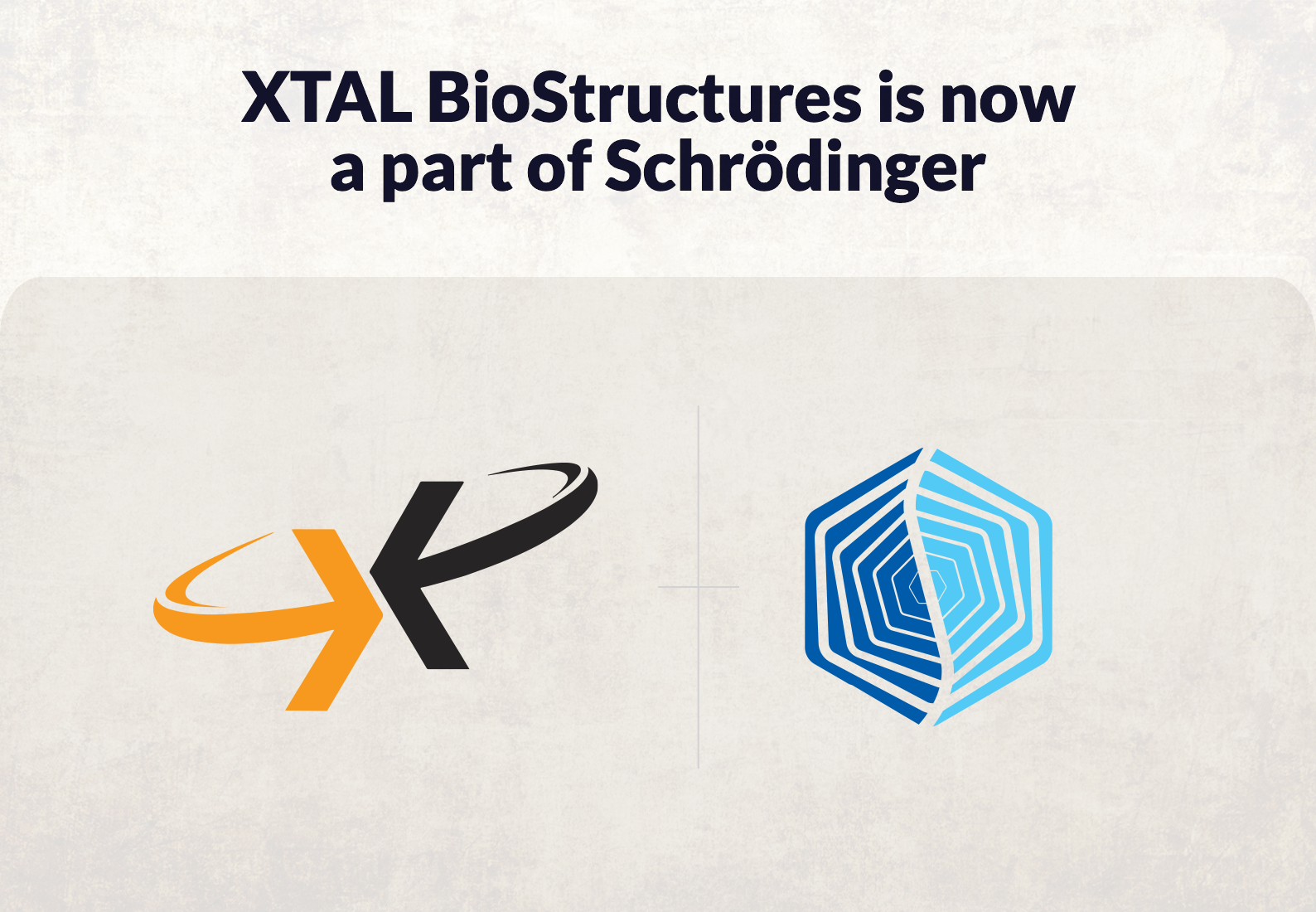On January 14, 2021, Schrödinger acquired XTAL BioStructures, Inc., a private company based in the Greater Boston area that provides structural biology services, including biophysical methods, protein production and purification, and X-ray crystallography, to the pharmaceutical and biotechnology industries to enable structure-based drug discovery. XTAL was founded in 2005 by Robert Suto, Ph.D.
We sat down with Karen Akinsanya, Ph.D., executive vice president, chief biomedical scientist and head of discovery R&D at Schrödinger, to discuss this important announcement and what it means for Schrödinger and for the future of structure-based drug discovery.
Why did Schrödinger integrate XTAL’s lab-based structural biology capabilities?
We have entered a new era in medicine discovery powered by a deeper understanding of proteins. Our ability to leverage protein structure and function insights for drug design has been fueled by advances in x-ray crystallography and cryo-electron microscopy (cryo-EM) methods, unprecedented increases in computing power and advances in molecular simulation technologies. The integration of experimental and computational methods and workflows is a tremendous opportunity for Schrödinger to be at the forefront of this field.
Our computational chemistry platform relies upon high-quality 3D protein structures that are obtained from techniques such as X-ray crystallography; however, several steps are required to accurately identify the position of each atom in experimental or predicted proteins before these structures can be used for in silico applications and to make reliable predictions that can drive drug discovery programs. This process, called structural enablement, when combined with predictive physics-based methods can generate computational assays that are used for chemical space exploration across billions of molecules.
Because high-quality structures are core to the business, we decided to bring these important structural biology capabilities in-house. Ultimately, combining our efforts with XTAL’s allows Schrödinger to produce significantly more high quality target structures that are fully enabled for our computational platform to support drug discovery.
How will XTAL’s business improve the process of structural enablement to benefit drug discovery?
Traditionally, structural enablement involves two separate processes: structure generation and refinement. First, the crystallographer or (cryo-electron microscopy scientist) generates a 3D structure of the protein; however, this structure is incomplete as it does not contain critical information, including the presence of hydrogen atoms and the charge on atoms. Typically a computational chemist will then refine this experimental structure by identifying the position and charge of each atom in the structure with high accuracy so that it can be used for computational workflows.
Instead of working in silos, protein scientists, structural biology experimentalists and computational chemists can collaborate on structure generation and refinement. XTAL shares our scientific vision of a collaborative approach to improve structural enablement, which was an important consideration for both parties. We believe cross-functional collaboration will result in the generation of higher quality 3D structures for an increasing number of novel drug discovery targets—and will vastly increase and accelerate the number of structure-based drug discovery programs across modalities.
Did Schrödinger consider building these structural biology capabilities in-house?
We explored building these structural biology capabilities in-house, but came to the conclusion that it was much more efficient to incorporate and expand XTAL’s capabilities.
How does XTAL’s business support Schrödinger’s current growth/investment strategy?
Combining structural enablement with our computational platform is a strategic area of investment for us, which we believe can benefit our internal pipeline, our collaborative programs, and the adoption of our platform across pharma and biotech companies across the industry.
The integration of XTAL enables us to pursue scientific advancements in the field of structural biology, augment our ability to produce high quality target structures for programs that we can develop internally, and expand our offerings to include an advanced and differentiated service that provides customers access to protein structures that have been computationally validated and are ready for structure-based virtual screening and lead optimization.
Schrödinger will not only have access to more structures, but can more reliably refine protein structures to a high enough resolution, which are starting points for our physics-based computational platform.
Read the press release about this announcement.








